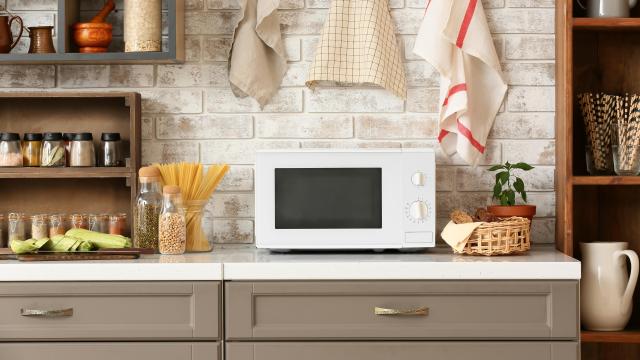Choreographing a lavish Thanksgiving meal is a high-pressure project to say the least, and when you’re juggling a dozen-odd dishes, every square inch of stove and oven space is precious real estate. A microwave oven can streamline even the most ambitious prep schedule, as long as you make good choices—some recipes just aren’t meant to be zapped.
Figuring out which of your Thanksgiving recipes can be adapted for the microwave is surprisingly tricky. Generally, the more water something contains, the better it’ll fare. That’s not always the case, though, and the nasty thing about microwaves is that they’re either the very best or very worst tool for the job; if it’s the latter, you’ll have a disaster on your hands. In the interest of disaster-aversion, here’s a guide to the dos and don’ts of Thanksgiving microwavery.
Custards, sauces, and most vegetables do well in the microwave
I’ll stop yelling about microwave custard when it becomes the default technique, OK? It eliminates every scary thing about making a custard: Just blend your ingredients together and nuke in short bursts until thickened. No big deal. Custard pie fillings are the big one here, but if you’re so inclined, you could use the time you saved to whip up a stock-based custard for extra-rich stuffing or a Swiss meringue topping for truly over-the-top sweet potato casserole.
Cranberry sauce is natural fit for the microwave; add all ingredients to a microwave-safe bowl, cover, and nuke on full power for about seven minutes, until you hear the berries start to pop. Chill in the fridge before serving.
You can make a solid roux in there, too—which means you’re just a few minutes away from perfect brown roux for gravy, and even less for a blond one. If your container is big enough, you can make the sauce entirely in the microwave: Whisk stock or milk (that you warmed in the microwave, of course) into the cooked roux and heat in short bursts until it’s the right consistency.
Brussels sprouts should always be roasted or fried, but most other festive vegetables—green beans, mashed potatoes, sweet potatoes, squash, carrots, broccoli—can be quickly par-cooked in the microwave—puncture any spuds, and place the vegetables in microwave-safe bowl with a few splashes of water. Cover, and nuke until they’re as soft as you’d like them to be. (This will vary depending on the sturdiness of your vegetable.)
Crispy garnishes like fried shallots and toasted nuts can be, too, which frees up your skillets for more important tasks.
Avoid microwaving recipes that need to brown on top
This miracle contraption does have its limitations, namely, the ability to sustain a Maillard reaction—the reaction responsible for creating toasty, roasty crusts—without turning your food into rubber. Stick to the oven for low-and-slow dishes like stuffing, green bean casserole, mac and cheese, and assorted gratins. Finally, I doubt you need me to tell you that you should never attempt to microwave a turkey—but just to be sure, why not text your mom and ask how long it’d take? I’m sure she’d love to help.

Leave a Reply
You must be logged in to post a comment.